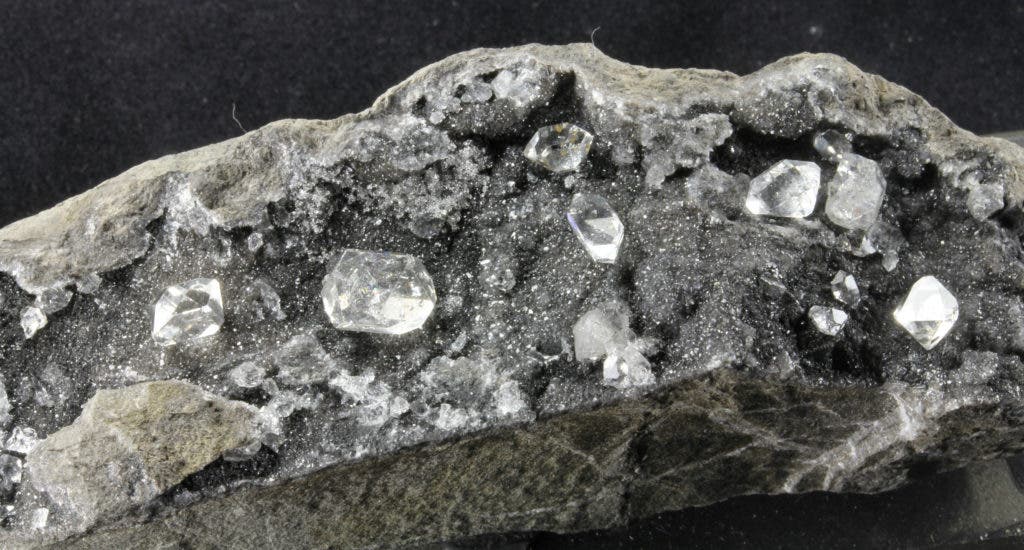Ice-VII (Ice Seven), an odd crystallized form of water, sounds like the stuff of science fiction. In many respects it is. Scientists have only recently managed to recreate the ungodly temperature and pressure conditions required to crystallize water into ice-VII, and no one thought it was possible to see it occur naturally — but it happened. Completely by accident, geologists have identified ice-VII crystals trapped as inclusions in some very lucky diamonds that migrated from deep within Earth’s mantle to the surface. The inclusions suggest that pockets of water may lie as deep as 500 miles into the Earth’s mantle.
In normal ambient pressure conditions, water that reaches its freezing point then crystallizes into a hexagonal arrangement, also known as Ice-1-h. This is what you would call ‘normal’ ice because it’s the only kind you usually find on Earth — from Antarctica’s ice shelf to your kitchen freezer. In other extraterrestrial environments, scientists believe water can crystallize into more than 17 types of ice, some of which have been demonstrated in laboratory conditions. For instance, ice-II has rhombus-shaped crystals and ice-III has tetragonal crystals. Ice-VII has cubic crystals and it can be an incredibly rare sight.
In 2017, scientists at the Los Alamos National Laboratory observed water turning into Ice-VII (Ice Seven) for the first time. It was a huge breakthrough in science and involved using an array of lasers to squeeze water to a pressure exceeding 50,000 times that of Earth’s atmosphere at sea level. Earlier this year, the feat was repeated by researchers at the Lawrence Livermore National Laboratory who squeezed water with a mind-boggling pressure millions of times greater than the pressure of air in our atmosphere. The whole experiment lasted only 10 to 20 nanoseconds, after which the pressure-release waves decompress and vaporize the whole sample.
Because it requires both low temperatures and super high pressure, ice-VII isn’t thought to occur naturally on Earth, though scientists think it should be present beneath the deep ice sheets of alien moons such as Enceladus and Europa, or on planets like Uranus and Neptune. But lo and behold, Oliver Tschauner did find ice-VII here on Earth — trapped inside diamonds pushed up from the Earth’s interior.
In the jewelry business, a diamond with inclusions is undesirable, being seen as “impure”. But What Tschauner and colleagues the University of Nevada found can be considered priceless.
The researchers collected diamonds from China, the Republic of South Africa, and Botswana that contained ice-VII, proving this is a global phenomenon and not just some freak occurrence. The presence of ice-VII was confirmed by x-ray scans which detected the crystal’s distinctive structure. Tschauner hypothesizes that the diamonds picked the molecules during their formation deep in the mantle. Here temperatures can be higher than 537 degrees Celsius (1,000 degrees Fahrenheit), which is far too hot for ice-VII to form. However, that’s where the diamonds saved the day. When they formed, the diamonds also preserved the internal structures of whatever inclusions found themselves trapped in the mantle.
This surprising discovery of ice-VII will help scientists come up with more accurate models of what’s going on inside Earth, but also elsewhere like Titan or Enceladus.
“These discoveries are important in understanding that water-rich regions in the Earth’s interior can play a role in the global water budget and the movement of heat-generating radioactive elements,” Tschauner said in a statement.
In other words: “It’s another piece of the puzzle in understanding how our planet works,” Tschauner said.
These findings appeared in the journal Science.










